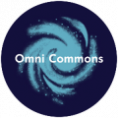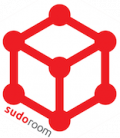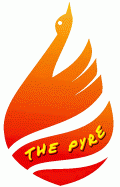|
|
The character of mass media has been shifting dramatically over the past century- from the one-directional consumption of television, to the dialogical (yet niche) nature of online bulletin boards, to the enormous multimedia production of today. As the tools of new media increase in accessibility and expand in ubiquity, we find ourselves in conversation with a public audience that is more or less evident.
Knowing who one’s audience is can be a tricky process. Blogs, websites, and publicly-accessible online profiles entail invisible publics. The creation of Friend Lists and the implementation of privacy features restricts one’s audience and enhances awareness of it. Through the lens of the social graph, we can create categorical definitions of our audiences by labeling clusters of relations.
(From the looks of it, it would appear that my social network revolves around the following sites: Wesleyan, Boston, NY, San Francisco, Washington D.C, and the Northwest US):

There is something intrinsically satisfying in visual representation that text lacks. There are also few things more desirable than that which reflects oneself, however iconically.
TouchGraph, the company behind this Facebook application, says on their website:
“Traditional search engines provide a way to sift through this data. However, the greatest insights can be achieved not by sifting, but by looking at the big picture to see how items are connected.”
Just the name of the company- TouchGraph, beckons us outside of the textuality of the Internet (a quality that is becoming progressively less prominent), allowing us to grasp our wider place in the virtual world on a more intuitive level.
Such data also allows us to understand exactly how limited our individual, direct scope actually is. I predict that the practice of mirroring real-life social networks will soon become secondary to the process of producing engaging media- which, as the Internet becomes increasingly searchable, will find its place amongst wider taste fabrics. These “taste fabrics” are constructed through “word of mouth” reconfigured to the modern sense- that is, hyperlinked. In turn we may find ourselves navigating visual representations of the taste fabrics we create through our Google searches, our social networks, and our own content.
Emancipation from the material bases of inverted truth this is what the self-emancipation of our epoch consists of. This “historical mission of installing truth in the world” cannot be accomplished either by the isolated individual, or by the atomized crowd subjected to manipulation, but now as ever by the class which is able to effect the dissolution of all classes by bringing all power into the dealienating form of realized democracy, the Council, in which practical theory controls itself and sees its own action. This is possible only where individuals are “directly linked to universal history”; only where dialogue arms itself to make its own conditions victorious.
-Guy Debord
the pure absurdity of this dissatisfaction-
nothing left, save distraction?
yet abhorrence of subtraction!
(i want
it all.)
I have been thinking of online social networks as pertinent examples of a generational trend, marked by the increasing appropriation of the media and proliferation of contextualized interpretations by disparate individuals, connected through shared taste fabrics that are founded, by and large, on mass media. The rise of Web 2.0 signifies a shift toward user-generated content in the form of blogs, photo albums, videos, music, niche communities, message board dialogue, playful interaction, computer media, and creative displays of identity (“mashup”).
The locale of the hearth (that which is safe, secure) has shifted, from the family home theater clustered around the television to a dynamic mirror of ourselves as relational wholes, albeit individually fragmented. We have begun to bridge the gap between producers and consumers of media- increasing interactivity allows for a two-way dialogue as opposed to the directional nature of mass media.
However, all is not oral. New media is rather a hybrid of oral and written language- at once casual yet permanent, private yet public, intimate yet mediated. We are creating the media, but must not forgot the role of the media in inculcating our understandings of reality.
My virtual wandering through the thousands of bulletin boards that make up Tribe.net exposed me to two terms I’d never heard of before, but instantly caught my attention: technoshamanism and neotribalism. Both terms evoke a somewhat romantic notion of merging modern technologies with our ancient tribal past. For instance, certain kinds of electronic music are claimed to have the capacity to induce trance-like states that are shared by a group of people through ecstatic dance, evoking images of shamanic tribal rituals in various parts of the world (such as South America, India, and Africa). Synthetic drugs such as LSD (“acid”) and MDMA (“ecstasy”) are frequently ingested as well, to aid in inducing trance-like states, altering visual and auditory perceptions, and enhancing feelings of connectedness to others and the “divine within”. In the words of one Tribe.net member:
“To me, [technoshamanism] is getting in touch with the past and uniting it with the present. Our species has danced the night away to a rhythm and beat for as long as we have had consciousness to do so. Whether it be an animal hide-based drum, or a drum machine the sound is the same. If music in general was compared to say, the English language, its beat and rhythm would be the vowel sounds that make up every word in existence. Understood by all who hear it regardless of ethnicity or creed.”
Various parallels with these ideas/beliefs can be found with religious movements: prophetic figures have emerged throughout the past half-century (such as Timothy Leary, Terence McKenna, Alex Grey and Daniel Pinchbeck), some of whom espouse the belief (traces of which can be found throughout the site) that the world will either come to an end in the year 2012, or become embroiled in a global spiritual transformation (this theory is rooted in the Mayan Calendar, but I won’t get too gritty with the details. It’s all widely disputed by Mayanist scholars). “The tribes and the primitive people will survive,” predicts a 50-year old Californian man, “know how to get all that you need from the earth. Nothing else can be expected to survive.” Like the Back-to-the-Land movement of the 1960’s, neotribalists seek a return to humanity’s “ancestral roots” through developing local, self-sustaining communities, with an emphasis on creating a global network of interconnected tribes. The Internet is, quite naturally, one of those modern technologies that is utilized by technoshamans as a means of tapping into the collective neural network.
Underlying the ideology of neotribalism is the concept of a universal consciousness that has been forgotten in the wake of civilization, and that must be rediscovered if humanity is to survive. A technoshaman, then, is a guide, one who integrates modern technology into primordial practices in order to induce transcendent experiences. Now, such a description evokes remnants of that anthropological black mark- the noble savage. From my vantage point, it feels a bit shameful- white hippies “going tribal,” attempting to appropriate cultural practices that have developed over centuries.
[Edit: Thanks for the feedback. My feelings about its shamefulness extend from my own personal experiences with such practices, and wondering, at times, if we are being duped into the sense of communitas- often brought about only through the aid of drugs. I’ve thrown many such parties, where I provided no drugs, in an attempt to see if *it* could be spontaneously generated without such additions… I failed, but that doesn’t mean I’ll stop trying…
I agree, we are enculturated to look down on such practices. And that’s fucked up.]
Your feedback is strongly encouraged… tap into my neural network, damnit!
For the past two years or so, I’ve been conducting field research on online social networks (MySpace, Facebook, and Tribe.net in particular), and am now in the midst of writing up my ethnography/thesis (tentatively titled “Webnography: An Ethnography of Online Social Networks” . Hopefully, by May I will be once again walking to a podium, this time to receive my master’s degree in anthropology from Wesleyan University. . Hopefully, by May I will be once again walking to a podium, this time to receive my master’s degree in anthropology from Wesleyan University.
Cyberanthropology, as it’s often called, is a relatively new field. Nevertheless, I’m entirely overwhelmed by the vast amount of information and research available online. For those interested in the field, I’ve put together a fairly well-organized assortment of links to past studies, pertinent blogs, and must-read books on the subject. You can get to it by clicking here.
I chose to conduct my research in an area of human life that I felt I was already a part of. I’ve little desire to study the “exotic other,” as I believe true knowledge starts with an intrinsic understanding, which is then expanded through conversations with others, situating the topic within the broader context of history and philosophy, and engaging in dialogue with other researchers of the subject. While there are empirical studies out there, my own research is anything but. The only true claim to authority I have is over my own experiences.
“Language is a virus from outer space.”
-William Burroughs
In the words of Marshall McLuhan, “the medium is the message”. In other words, we’re not really saying anything new – how could we? What is changing, however, are the tools for communication. Each new medium takes on qualities of those which came before it, and extend our possibilities for communication. Thus, in the case of communication on the Internet, we experience the permanence and distantiation from time and space that print media has allotted for, as well as the immediacy and convenience afforded to us by the telephone. We are furthermore enabled to broadcast ourselves in a way that television could never quite encompass, even with “reality” programming. Unlike any previous private communications medium, our experiences on the Internet are enhanced by images, video, and sound.
“Technology is the campfire around which we tell our stories.”
-Laurie Anderson
Perhaps the greatest danger to writing about the Internet is that of technological determinism- the belief that technology determines changes in society. On the contrary, societies develop technologies that are always being shaped by the culture they’re embedded in. We are not a society being altered through our technologies- rather, we are human beings engaging in the same activities through the use of evolving tools (hence the “campfire” metaphor, above). The modern age, however, has arguably transformed humankind’s way of thinking and perceiving in ways that have yet to be fully determined. Understanding where we are, where we’ve come from, and where we are going is an important endeavor, I believe, if we are to understand the implications of modernization and the future of this planet.
all of you oughta view it with your
tongue and tact intact, in fact!
it sung and wrung the tears with shears,
which spread on everyone.
(ms.anthropological.com)
it yawns before me infinite
folder of channeled attention,
i beget the rest.
be better than the best you’ve been
(there is a crack in everything).
These past few weeks have been a rush of novel experiences, as I reconfigure my identity in an extremely pointed way. I have been meeting so many new people, and first conversations almost inevitably touch upon my research, which is essentially what i do (who i am?) right now.
As a result, I’ve taken to carrying a digital voice recorder in my pocket. It’s mere presence has a similar effect on me as speaking in front of a crowd of people: intense social phobia. I treat the object gingerly, awed by its potential to preserve the situation so very perfectly in a peculiar mode. Tonight, a friend who promotes his tracks on MySpace spoke of Google’s vast database of categorized interest nodes, sending advertisements directed uniquely at his individual identity as derived from his web browsing habits. Google’s rumored launch to “out-open” Facebook– that is to say, become the next leading online social network, is of particular interest to me, as is the increasing popularity of niche social networking sites, blogospheres, and Second Life.
His face would have been handsome, had it not been for the maniacal contortions of his eyes and mouth, and the pushy manner in which he shoved large bottles of bourbon and wine to our lips. “Are you trying to tell me,” he cackled in a heavy south american accent, “that YOU are the new fountain?!” He bounced about us, grinning, encouraging us to dance and play his nonsensical games.
“You are ridiculous,” I managed between nervous gasps of laughter. He was unpredictable, spastic, and frenetic, bouncing inches from our faces and invading space at every opportunity. Before I knew it, he’d curled his body teasingly around the kindly and confused older Irishman, who beseeched us with apologetic gestures. The young, flamboyant man smiled up brilliantly, fingering a shimmering necklace that adorned the elder gentleman, “I got you a neeecklace!” The Irishman shot us a sheepish grin, “he is out of mind!”
We disentangled ourselves from the situation, following a few more rounds of “cheers!”, and wandered up the trail. Disoriented, we wished for home, for the feeling of it. Home was soon found, and it far exceeded our wildest expectations: we rounded a corner to a tall, bald Irishman in a long purple robe, wielding a glow-in-the-dark lightening bolt and surrounded by inflatable aliens. We greeted him with what were surely exhausted, young and hopeful faces, and were instantly seated around the small campfire and treated to tea. Our hero then proceeded to entertain us with a few rounds of classic Irish storytelling, replete with circular rhythm and mock humility (he knew he’d won us at ‘g’mornin’ to ya!’).
So commenced a morning that marked the last stage of a bewildering, night-long journey. Merely hours earlier I’d entirely convinced myself that sinister forces were at work behind this unorganized, chaotic festival in the forest. How to trust new faces at the campsite- other generations, alternate motives, as the night caved in upon itself? As the furtive and paranoid flashlight-lit glances of the dark night gave way to dawn, however, I began to see more clearly the utter absudity of that which surrounded us: a thousand ageless children from every conceivable nook and cranny of the world, gathered together in reverence of the hard beats and gentle spirits that had wooed our searching souls.
I could not begin to number the many times my eyes filled with tears that weekend. The kindness and openness of utter strangers, the familiar faces from countless long nights of ecstatic dance, the devastating beauty of the water and the earth, the re-creation of true community by those who simply could not comply with the stratum and structure of society as presented to us, how it had come to know us so deeply and wordlessly.
Yet still I seek to put words to it, so that I may pay homage, or rather, that I might recall the feeling of a welcome mist at dawn, sweat-drenched and joyful, drinking in rainbows that spanned the entirety of our shared horizon.
is to create it-
loneliness at odds with mania,wild careenings about!
would that it were another way…
(but in every game there is play-
so play it! and nothing is good
unless you do)
|
|






 . Hopefully, by May I will be once again walking to a podium, this time to receive my master’s degree in anthropology from Wesleyan University.
. Hopefully, by May I will be once again walking to a podium, this time to receive my master’s degree in anthropology from Wesleyan University.